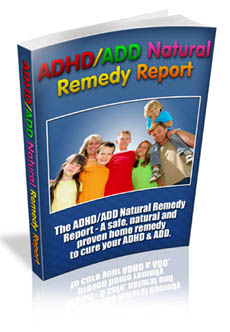Jobs For Adults With ADD
What are the aspects of the physical environment that we need to take into account? Again, I want to underscore the importance of identifying and looking at subgroups. In the meantime, until the research is done, each family should look at their child as distinct and unique. He is the n of one (n meaning the number of subjects in the research being carried out). The key is to look at how your child, or a particular child if you are a caregiver or clinician, responds to his physical environment. Rather than starting with the working assumption of "Many children respond in this way to a noisy environment or a bright, highly lit environment or a crowded environment," ask yourself, "How does this child respond to this particular aspect of his physical environment?" Here are some aspects of the physical environment that we need to focus on and take into account.
Sugars and Processed Carbohydrates. Controversy surrounds the question of whether sugar can make children inattentive. Some studies have suggested sugar doesn't make children more inattentive or more active, and other studies, published in respectable journals like the British Journal Lancet have suggested that it can and does. There is a little-known study, for example, showing that glucose (sugar when it is metabolized) stirs epinephrine, or adrenaline, as it is more commonly known, in the body, and that certainly would give a person an energy boost. The question then becomes: Does this create more inattentiveness or increase the activity level in children? For some children it probably wouldn't, but for others it might. Jobs For Adults With ADD
What is the amount of sugar or processed carbohydrates in your child's diet? Processed carbohydrates, like white rice, as opposed to complex ones, like brown rice or other whole grains, convert quickly to glucose or sugar in the body, as do fruit juices compared to whole fruits, which take a little longer. Many vegetables take even longer. So foods that convert very quickly create a very quick glucose load for the body that some children may handle very easily, but it may throw children with a low threshold off balance. Also, it may stimulate some adrenaline release that may, in turn, stimulate increased activity or distractibility in some children. Again, look for a pattern for your individual child.
Additives, Preservatives, Colorings, and Dyes. The next area, again a very controversial one, is that of additives, preservatives, food colorings, and dyes. Some people believe these ingredients contribute to inattention and hyperactivity, and some people disagree. Here, too, I see a lot of individual variation among different children. For some children, red dye number 40 drives them wild as soon as they ingest something containing this dye. Some adults have this problem as well. For other children and adults, ingesting foods containing this dye has no on them at all. This doesn't happen only to children with ADHD or ADD but may have to do with a particular sensitivity. It may not be a "food allergy" in the conventional sense of allergies. It may be a sensitivity, just like some individuals are sensitive to coffee or sensitive to wine, as mentioned before.
Here, too, you have to look not just at the load of artificial substances - chemicals in the diet - but you have to look at, in particular, what may affect your child. So additives, preservatives, food colorings, dyes, and anything that is not natural to the food, as well as particular foods - for some children, corn or eggs or dairy or gluten products - could be a culprit or cause a problem. Look for particular food groups as well as artificial substances that your child may be sensitive or allergic to.
There are more and more artificial substances being added to our food, including antibiotics added to feed to keep bacteria out of meat and poultry. There are hormones that are used to create more muscle in cattle. Any of these substances can be a problem for a child. Compare how your child does on an organic versus nonorganic diet and see if that makes a difference in the child's behavior. Jobs For Adults With ADD
When you are looking at these things, a useful way of doing your detective work is doing two weeks on and two weeks off a diet in which you have the child free of the substance you are checking for two weeks and then two weeks during which the child consumes products containing that particular substance. See if there is a difference in the child's behavior. Set up your own 1-10 scale on the behavior you are interested in tracking - the child's cooperativeness, ability to follow directions, ability to focus and attend and stay calm (assuming the family circumstances and the emotional triggers are the same and you are not going through a particularly rough time at home or the child is not having a particularly difficult time at school). To learn more, you can check out Jobs For Adults With ADD.


